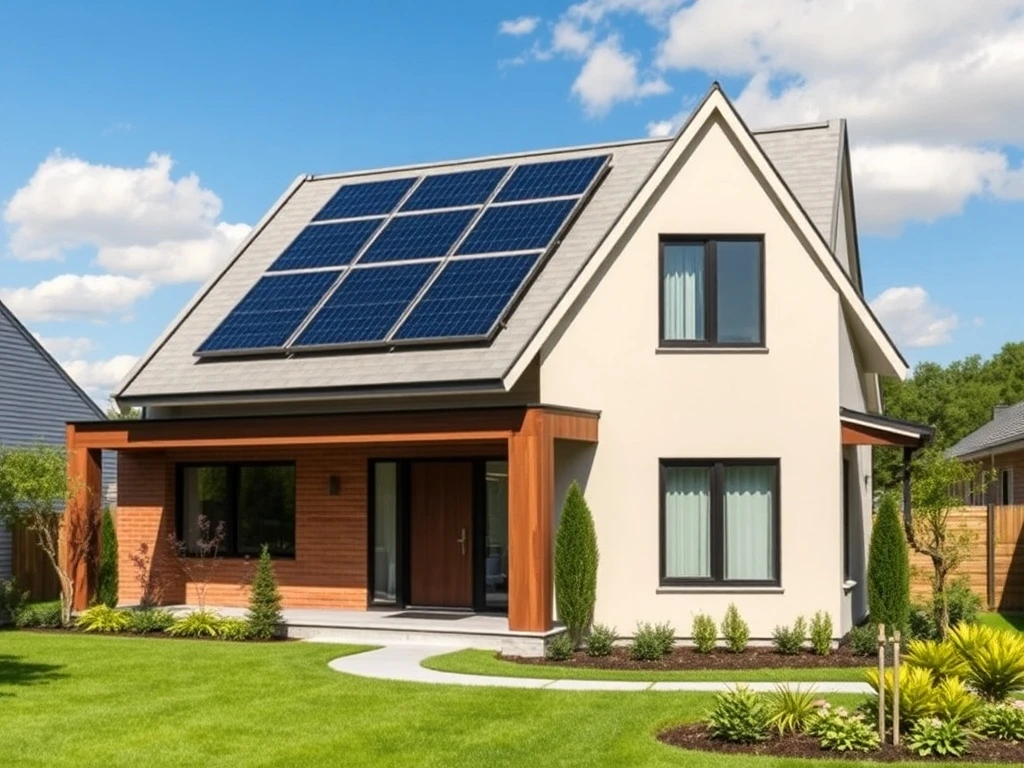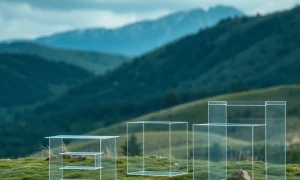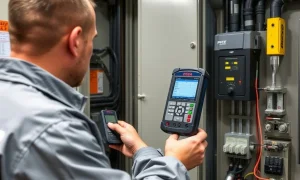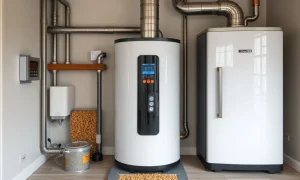Roofing has evolved dramatically. It now offers far more than just basic shelter. Today, homeowners expect their roofs to actively contribute to energy efficiency, enhance indoor comfort, and significantly boost property aesthetics. Thanks to advancements in materials, installation methods, and innovative design, modern roofing techniques are redefining home protection and enhancement. These innovations seamlessly integrate sustainability with style. Consequently, roofs become a central element in increasing both property value and daily livability. This comprehensive guide explores how these cutting-edge solutions are transforming homes across the nation.
The Core of Efficiency: Advanced Modern Roofing Materials
The materials chosen for a roof directly impact energy consumption and comfort within a home. Traditional asphalt shingles, while still common, are being surpassed by more energy-conscious options. These include metal roofing, cool-roof coatings, and reflective shingles. Modern roofing techniques utilize these materials to deflect solar heat, not absorb it. This significantly reduces the need for air conditioning during warmer months.
-
Cool Roof Technology: These systems incorporate highly reflective paints, sheet coverings, or tiles. They reflect sunlight and absorb less heat than standard roofs. This keeps the roof surface and the building cooler. Energy Star-rated cool roofs can lower roof surface temperatures by 50°F or more. This reduces peak cooling demand by 10-15%.
-
Metal Roofing Advantages: Metal roofs offer exceptional durability, often lasting 50 years or more. They are inherently reflective, which helps keep homes cooler. Many metal roofs feature special coatings that further enhance their reflectivity. Furthermore, metal is a highly recyclable material, aligning with sustainable building practices. They come in various styles, mimicking shingles, shakes, or tiles.
-
Sustainable Tile Options: Clay and slate tiles provide natural insulation and remarkable durability. These materials are heavy but offer excellent thermal mass, which helps stabilize indoor temperatures. Modern synthetic materials now mimic their aesthetic appeal at a fraction of the weight and cost. Concrete tiles also offer similar benefits, providing a robust and insulating layer.
-
High-Performance Synthetics: These engineered materials are often made from recycled content. They replicate the look of natural slate, wood shakes, or clay tiles. They are lightweight, durable, and often feature enhanced UV resistance and reflective properties. Paired with proper insulation underlayment, these options create a powerful thermal barrier. This helps regulate indoor temperature effectively year-round.
Beyond the Surface: Integrated Ventilation and Insulation Systems
Proper ventilation is absolutely critical for maximizing a roof’s performance. Without adequate airflow, heat and moisture can accumulate in the attic. This leads to higher energy costs and potential structural damage. Issues like mold growth or wood rot become significant risks. Modern roofing techniques actively integrate advanced ventilation and insulation systems. These systems promote balanced airflow and superior thermal resistance.
-
The Science of Airflow: Heat naturally rises. In an attic, hot air gets trapped. This transfers heat downward into living spaces. Proper ventilation creates a continuous path for air to enter at the eaves (soffit vents) and exit at the ridge (ridge vents). This consistent airflow flushes out hot, humid air. It maintains a cooler, drier attic environment.
-
Types of Vents: Ridge vents are installed along the peak of the roof. They offer a continuous, unobtrusive exhaust. Soffit vents are placed under the eaves, providing intake air. Together, they create a natural convection current. Other options include static vents, gable vents, and powered attic fans. These supplementary systems can enhance airflow, especially in complex roof designs. Effective ventilation is a cornerstone of efficient modern roofing techniques.
-
Advanced Insulation Solutions: Energy-efficient insulation materials further reduce heat transfer. Options like spray foam insulation provide an airtight seal, preventing air leaks and thermal bridging. Rigid foam boards offer high R-values in compact thicknesses. Radiant barriers, typically reflective foils, block radiant heat transfer from the roof deck into the attic. When combined with reflective roofing, these integrated systems create a remarkably well-regulated indoor environment. For homeowners, this means greater comfort across seasons. It also results in fewer spikes in heating or cooling costs.
Investing in Tomorrow: Why Homeowners Choose Modern Roofing Techniques
One primary reason property owners explore modern roofing techniques is the long-term benefit of energy savings. Outdated roofs lose efficiency over time. Shingles deteriorate, insulation weakens, and ventilation systems become compromised. This makes roof replacements a strategic investment. They enhance both appearance and financial savings. By upgrading to newer materials and designs, homeowners can significantly reduce utility bills. They may also qualify for green building incentives or tax credits. This financial benefit is a strong motivator for many.
-
Significant Energy Savings: A new, energy-efficient roof can drastically cut heating and cooling expenses. Studies show that cool roofs can reduce air conditioning costs by 15-20%. This translates into substantial savings over the roof’s lifespan. The initial investment often pays for itself through reduced energy consumption.
-
Financial Incentives and Tax Credits: Many governments and local utilities offer incentives for energy-efficient home improvements. These can include federal tax credits for certain roofing materials, state rebates, or local programs. Homeowners should research available incentives. These can significantly offset the cost of adopting modern roofing techniques.
-
Long-Term Durability and Reduced Maintenance: Modern roofing materials are engineered for extended lifespans. Metal roofs, for example, can last 2-3 times longer than traditional asphalt shingles. This durability means fewer repairs and less frequent replacements. Homeowners save money and time on maintenance over decades.
-
Environmental Impact and Sustainability: The latest roofing systems are designed with sustainability in mind. Many feature recycled content, reducing demand for virgin materials. Their longer lifespans mean less waste sent to landfills. Options for integrating solar panels seamlessly into the structure further enhance environmental benefits. These systems offer a smaller carbon footprint throughout their lifecycle. Beyond function, they also enhance curb appeal, giving older homes a refreshed look that appeals to future buyers.
The Green Revolution: Eco-Friendly Modern Roofing Innovations
The push for sustainability has led to remarkable innovations in roofing. These eco-friendly modern roofing techniques go beyond energy efficiency. They actively contribute to a healthier environment. They also offer unique aesthetic and functional benefits for property owners. These cutting-edge solutions are becoming increasingly popular in both urban and suburban settings. They represent a significant step towards greener living.
-
Living Roofs (Green Roofs): These roofs feature layers of vegetation atop waterproof membranes. They are gaining immense popularity, especially in urban areas. Green roofs help regulate building temperature by providing natural insulation. They also improve air quality by filtering pollutants. Furthermore, they significantly reduce stormwater runoff, easing pressure on drainage systems. Though they require specialized installation and ongoing maintenance, their environmental and visual benefits make them an attractive option for eco-conscious homeowners. They create urban green spaces, supporting biodiversity.
-
Solar-Integrated Roofing: Traditional bulky solar panels are being replaced by more discreet options. Solar-integrated roofing tiles are becoming increasingly accessible. Unlike conventional panels, these tiles blend seamlessly into the roofline. They maintain a sleek, uniform appearance while generating renewable energy. This innovation allows homeowners to produce clean electricity without compromising their home’s aesthetic. They are an elegant solution for sustainable energy generation. These systems can also be paired with battery storage for even greater energy independence.
-
Rainwater Harvesting Systems: While not strictly a roofing material, modern roofing designs often integrate rainwater harvesting. This involves collecting rainwater from the roof surface. The water is then stored for non-potable uses like irrigation or toilet flushing. This reduces reliance on municipal water supplies. It also lessens stormwater impact. Such systems are a natural extension of sustainable modern roofing techniques, providing a comprehensive eco-friendly solution.
Elevating Aesthetics: Curb Appeal Through Modern Roofing Design
Beyond efficiency, roofing plays a vital role in a home’s overall appearance. Manufacturers now offer a wider range of colors, textures, and styles. Consequently, roofs can now complement architectural design rather than simply cover it. Homeowners can choose from bold hues, wood-shake-inspired textures, or sleek metal finishes. This allows them to make their property truly stand out. Modern roofing techniques enable unprecedented customization, transforming the roof into a key design element.
-
Color and Texture Palettes: The color of a roof significantly impacts a home’s perceived size and style. Lighter colors reflect more sunlight, enhancing energy efficiency. Darker colors create a dramatic look. Textures can mimic natural materials like wood or slate. This adds depth and character. The vast selection ensures homeowners can find the perfect match for their home’s exterior.
-
Architectural Shingles: These are a prime example of design-focused modern roofing techniques. Architectural shingles feature varying shapes and thicknesses. They create a multi-dimensional look, resembling natural wood shakes or slate. They are thicker and heavier than traditional 3-tab shingles. This provides superior wind resistance and a more distinctive appearance. Their layered construction adds visual interest and enhances curb appeal significantly.
-
Mimicking High-End Materials: Synthetic materials offer premium aesthetics without the premium cost or maintenance. For example, synthetic slate tiles perfectly replicate the look of natural slate. They are much lighter and easier to install. Similarly, synthetic cedar shakes provide the rustic charm of wood. However, they avoid issues like rot, insects, and fire hazards. This design flexibility ensures homeowners do not have to sacrifice style for sustainability or budget.
-
Seamless Integration: Modern roofing is not an isolated element. It integrates seamlessly with other exterior features. The right roof can unify the home’s architecture. It complements siding, windows, and landscaping. This creates a cohesive and visually appealing property. Expert installation ensures clean lines and a professional finish, further boosting curb appeal.
Maximizing Value: ROI of Modern Roofing Techniques
Modern roofing solutions provide more than immediate savings. They significantly enhance long-term property value. Energy-efficient roofs lower utility expenses consistently. Durable materials reduce repair and replacement costs over decades. From a resale perspective, an upgraded roof boosts curb appeal dramatically. It also reassures potential buyers that the property is well-maintained and future-ready. This makes it a highly attractive feature in the real estate market.
-
Increased Property Value: A new roof is a major selling point. A modern, energy-efficient roof signals quality and reduces future costs for buyers. This often translates into a higher asking price and faster sales. Homeowners typically recoup a significant portion of their investment at resale. Some reports indicate an ROI of 60-70% or more for a new roof.
-
Enhanced Marketability: Homes with modern roofing techniques stand out. They offer both aesthetic appeal and practical benefits. This makes them highly marketable. Buyers are increasingly looking for sustainable and low-maintenance properties. An updated roof meets both these criteria. It appeals to a broader range of potential purchasers.
-
Commercial Applications: These benefits are equally pronounced for businesses. Commercial buildings with reflective or green roofing solutions cut down on operational costs. They also enhance their environmental profile. This appeals to eco-conscious clients and tenants. A modern roof can contribute to LEED certification. This improves a company’s public image and market position. It demonstrates a commitment to sustainability.
-
Lifecycle Cost Analysis: While the initial cost of modern roofing might be higher, a lifecycle cost analysis reveals significant savings. Lower energy bills, reduced maintenance, and extended lifespan contribute to a lower total cost of ownership. This long-term financial advantage makes modern roofing a smart economic choice for any property owner.
Future Outlook: The Evolution of Modern Roofing Techniques
The roofing industry continues to innovate rapidly. Future modern roofing techniques will integrate even more advanced technology. We can expect to see smarter materials and more interconnected systems. This ongoing evolution promises even greater efficiency, durability, and functionality. Roofing will become an even more active component of smart homes and sustainable infrastructure.
-
Smart Roofing Systems: Expect roofs with embedded sensors. These sensors could monitor temperature, moisture, and structural integrity. They might even detect potential issues before they become major problems. Such systems could alert homeowners to necessary maintenance or repairs. This proactive approach saves time and money. It ensures optimal performance of the modern roofing techniques.
-
Self-Healing Materials: Research is underway on materials that can self-repair minor damage. Micro-capsules containing healing agents could activate upon cracking. This would extend the roof’s lifespan and reduce maintenance needs. This cutting-edge technology could revolutionize durability.
-
Further Integration with Smart Home Ecosystems: Roofing systems will likely become more seamlessly integrated with overall home automation. This could include dynamic solar panel adjustments for optimal energy capture. It might also involve automated ventilation linked to indoor climate controls. This creates a fully optimized and responsive living environment.
The roof of a home or building is no longer just a functional necessity. It is a design feature, an energy system, and a sustainability tool. Modern roofing techniques combine cutting-edge materials, smart ventilation systems, and eco-friendly innovations. They create solutions that deliver both beauty and performance. Whether through roof replacement, green roofing, or solar integration, today’s homeowners can achieve a perfect balance. They gain efficiency, durability, and exceptional curb appeal. As the demand for sustainable, stylish, and cost-effective housing solutions grows, modern roofing will continue to evolve. For property owners, keeping pace with these innovations is one of the smartest investments they can make. It benefits their comfort, finances, and future property value.
Frequently Asked Questions (FAQs) About Modern Roofing Techniques
1. What are the primary benefits of upgrading to modern roofing techniques?
Upgrading offers multiple benefits. It significantly improves energy efficiency, reducing utility bills. It also enhances your home’s curb appeal and increases its resale value. Modern roofs provide superior durability and often come with extended warranties. Many also contribute to environmental sustainability through recycled content and longer lifespans.
2. How do modern roofing materials contribute to energy efficiency?
Modern materials like metal, cool-roof coatings, and reflective shingles are designed to reflect solar heat. This prevents heat absorption into your home. This reflective quality reduces the need for air conditioning, especially during warm months. Paired with advanced insulation, these materials create a thermal barrier that helps regulate indoor temperatures year-round.
3. Are there financial incentives for installing energy-efficient modern roofing?
Yes, many governments and local utility companies offer incentives. These can include federal tax credits, state rebates, or local programs for homeowners who install energy-efficient roofing materials or systems. It is advisable to research available programs in your specific area to take advantage of these savings.
4. What role do ventilation and insulation play in modern roofing techniques?
Proper ventilation and insulation are crucial. Ventilation systems, such as ridge and soffit vents, create continuous airflow. This prevents heat and moisture buildup in the attic. Advanced insulation materials like spray foam or rigid boards further reduce heat transfer. Together, they maintain a stable indoor temperature, leading to greater comfort and lower energy costs.
5. How do green roofs and solar-integrated tiles work?
Green roofs feature layers of vegetation over a waterproof membrane. They insulate, improve air quality, and manage stormwater. Solar-integrated tiles are photovoltaic cells designed to look like regular roofing tiles. They blend seamlessly into the roofline while generating clean electricity for your home. Both options enhance sustainability and reduce environmental impact.
6. How do modern roofing techniques enhance a home’s curb appeal?
Modern techniques offer a vast array of colors, textures, and styles. Architectural shingles create depth and dimension. Synthetic materials mimic premium looks like slate or cedar at a lower cost. This design flexibility allows homeowners to choose a roof that perfectly complements their home’s architectural style. It significantly boosts its overall aesthetic appeal and market value.








